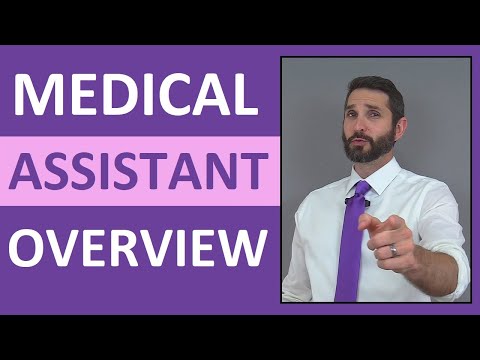Telemedicine for Medication Assisted Treatment
Contents
- What is Telemedicine?
- What is Medication Assisted Treatment?
- How can Telemedicine help with Medication Assisted Treatment?
- The Benefits of Telemedicine for Medication Assisted Treatment
- The Risks of Telemedicine for Medication Assisted Treatment
- How to Implement Telemedicine for Medication Assisted Treatment
- Case Study: Telemedicine for Medication Assisted Treatment
- Pros and Cons of Telemedicine for Medication Assisted Treatment
- What the Future Holds for Telemedicine and Medication Assisted Treatment
- Resources for Telemedicine for Medication Assisted Treatment
Telemedicine for Medication Assisted Treatment (MAT) can help you get the care and treatment you need without having to travel to a clinic or hospital. Learn more about how telemedicine can help you get the treatment you need.
Checkout this video:
What is Telemedicine?
Telemedicine is a remote delivery of healthcare services and information using telecommunications technology. It allows patients to receive care from providers without having to travel to a healthcare facility. Telemedicine can be used for a variety of purposes, including:
– diagnosing and treating patients
– providing specialist consultations
– delivering therapy and rehabilitation services
– providing patient education and support
Telemedicine has been shown to improve access to care, especially for patients in rural or underserved areas. It can also help reduce the cost of healthcare by reducing the need for travel and by increasing the efficiency of provider visits.
What is Medication Assisted Treatment?
Medication Assisted Treatment (MAT) is the use of medication in combination with counseling and behavioral therapies for the treatment of substance use disorders. Medication assisted treatment can be used to treat alcohol use disorder, opioid use disorder, and other substance use disorders.
MAT is a comprehensive approach to treating substance use disorders that includes the use of FDA-approved medications, such as buprenorphine, methadone, and naltrexone, in combination with counseling and behavioral therapies. MAT programs also provide individual and group counseling, as well as support services such as case management and referrals to community resources.
MAT is an evidence-based practice that has been shown to be effective in the treatment of substance use disorders. MAT programs can help people reduce or stop their use of drugs or alcohol, reduce their criminal activity, improve their employment outcomes, and improve their overall health and well-being.
How can Telemedicine help with Medication Assisted Treatment?
There are many ways that Telemedicine can help with Medication Assisted Treatment (MAT). First, Telemedicine can provide access to care for people who live in rural or underserved areas. Second, Telemedicine can improve communication between patients and their care providers. Third, Telemedicine can increase medication adherence by providing reminders and monitoring patients’ progress. Finally, Telemedicine can help to coordination care between different providers.
The Benefits of Telemedicine for Medication Assisted Treatment
The use of telemedicine for medication assisted treatment (MAT) has grown in popularity in recent years. This is due to the many benefits that telemedicine can offer to both patients and providers. Telemedicine can provide patients with access to care that they would otherwise not have, and it can also help to improve the quality of care that patients receive. In addition, telemedicine can help to reduce the cost of care, both for patients and providers. Below are some of the key benefits of telemedicine for MAT:
1. Telemedicine can improve access to care: One of the biggest benefits of telemedicine is that it can improve access to care, especially for those who live in rural or underserved areas. With telemedicine, providers can reach more patients with MAT services, which can help to reduce the overall number of people who need treatment.
2. Telemedicine can improve the quality of care: Telemedicine can also help to improve the quality of care that patients receive. This is because telemedicine allows for more frequent and regular communication between providers and patients. This communication can help to identify potential problems early on, and it can also help to ensure that patients are receiving the best possible care.
3. Telemedicine can reduce the cost of care: Another big benefit of telemedicine is that it can reduce the overall cost of care. This is because telemedicine allows providers to see more patients without incurring the same travel and lodging costs as they would if they saw each patient in person. In addition, telemedicine can help to reduce missed appointments and hospitalizations, both of which can lead to significant savings for both patients and providers.
The Risks of Telemedicine for Medication Assisted Treatment
Telemedicine for medication assisted treatment (MAT) has been shown to be effective in increasing access to care, but there are potential risks that should be considered. One risk is that patients may not have the same level of follow-up care and support that they would receive in an in-person setting. This can lead to problems with medication adherence and may result in higher rates of relapse. Additionally, there is a risk that patients will not be able to adequately express their symptoms or concerns to their care provider, which could lead to misdiagnosis or undertreatment. It is important to weigh the risks and benefits of telemedicine before starting MAT, and patients should be closely monitored after starting treatment to ensure that they are receiving the best possible care.
How to Implement Telemedicine for Medication Assisted Treatment
More than two million Americans suffer from addiction to opioids, such as heroin or prescription painkillers. According to the National Institute on Drug Abuse, only about 20 percent of people with addiction receive treatment. Medication assisted treatment (MAT) is one of the most effective ways to treat addiction, yet many people who need it do not have access to it. MAT combines behavioral therapy with medication to provide a “whole-patient” approach to treatment.
One way to increase access to MAT is through the use of telemedicine. Telemedicine is the use of technology to deliver care at a distance. It can be used for everything from mental health counseling to physical therapy. In the case of MAT, telemedicine can be used to connect patients with providers who can prescribe and monitor medications.
There are many advantages to using telemedicine for MAT. One is that it removes geographical barriers, making it possible for people in rural or underserved communities to get the care they need. Another is that it increases access to care by making it possible for providers to see more patients in a given day. Telemedicine can also improve continuity of care by making it easier for patients and providers to stay in touch between office visits.
If you are interested in implementing telemedicine for MAT in your community, there are a few things you will need to do:
1) Make sure you have the right technology in place. This includes ensuring that your staff is trained on how to use the technology and that you have a reliable internet connection.
2) Find a provider who is willing and able to prescribe medications via telemedicine.
3) Connect with a Oral Health provider who can offer counseling and support via telemedicine.
4) Educate your community about the benefits of telemedicine for MAT and how to access services.
Case Study: Telemedicine for Medication Assisted Treatment
Technology has the potential to improve patient access to care, but its role in detox and recovery is still emerging. A new study from JAMA Internal Medicine explores how telemedicine—the use of video conferencing for medical appointments—might improve medication assisted treatment (MAT) for people with addiction.
MAT involves the use of medications, such as methadone or buprenorphine, to help people wean off of opioids like heroin or prescription painkillers. It’s a critical part of the continuum of care for people with addiction, but access to treatment can be limited by geography, cost, and other factors.
In this study, researchers looked at whether a telemedicine program could improve access to MAT in a rural area of Kentucky. The program allowed patients to have weekly appointments with a physician via video conference, and also provided them with access to on-site counseling and case management services.
The results were encouraging: patients who participated in the telemedicine program were more likely to stay in treatment and had better outcomes than those who didn’t participate. The findings suggest that telemedicine might be a promising tool for expanding access to MAT and other addiction services in rural areas.
Pros and Cons of Telemedicine for Medication Assisted Treatment
Telemedicine is the remote diagnosis and treatment of patients using telecommunications technology. It allows health care providers to consult with and treat patients without being in the same physical location. Medication assisted treatment (MAT) is a type of telemedicine that is used to provide medication to patients with substance abuse disorders.
There are many pros and cons of using telemedicine for MAT. Some of the pros include:
-Increase access to care: MAT can be provided to patients who live in rural or underserved areas that do not have easy access to healthcare providers.
-Improved patient outcomes: Studies have shown thatMAT can improve patient outcomes, including reducing relapse rates and increasing retention in treatment.
-Flexible appointment times: Telemedicine appointments can be scheduled at times that are convenient for both the patient and provider, which can make it easier for people to get the care they need.
Some of the cons of using telemedicine for MAT include:
-Security risks: There is a risk that confidential patient information could be accessed by unauthorized individuals if it is not properly secured.
-Provider availability: There may not always be a provider available when a patient needs one, which could lead to delays in care.
-Cost: Although telemedicine can increase access to care, it can also be costly if patients do not have insurance coverage or if providers charge high fees for their services.
What the Future Holds for Telemedicine and Medication Assisted Treatment
Medication assisted treatment (MAT) is a type of treatment that combines medication with behavioral therapy to treat substance use disorders. MAT has been found to be an effective treatment for substance use disorders, and many experts believe that telemedicine can play a role in expanding access to this life-saving treatment.
In the past, one of the biggest barriers to accessingMAT has been the lack of providers who are certified to prescribe MAT medications.Telemedicine can help expand access to MAT by connecting patients with certified providers who can prescribe MAT medications using videoconferencing or other remote methods.
In addition, telemedicine can also help improve patient compliance with their medication regimen by providing reminders and support from their care team. Non-compliance is a major problem with traditional MAT programs, and telemedicine can help improve patient outcomes by ensuring that patients take their medications as prescribed.
The future of telemedicine and MAT looks promising, and it is likely that telemedicine will play an increasingly important role in expanding access to this life-saving treatment in the years to come.
Resources for Telemedicine for Medication Assisted Treatment
Telemedicine is a growing field in the medical world, and it shows great promise for treating chronic conditions like addiction. Medication assisted treatment (MAT) is a type of treatment that uses medication to help people recover from addiction. It has been shown to be effective, but many people struggle to access MAT services due to lack of insurance or transportation. Telemedicine can help to close the gap for these individuals by providing access to care from anywhere with an internet connection.
There are a number of resources available for people interested in using telemedicine for MAT. The Substance Abuse and mental health Services Administration (SAMHSA) offers a list of approved telemedicine providers, and the American Telemedicine Association (ATA) provides a directory of providers as well. In addition, many individual state Medicaid programs cover telemedicine services, so it is worth checking with your state’s program to see if they have any providers listed.
If you are interested in using telemedicine for your MAT needs, these resources can help you find a provider that is right for you.







